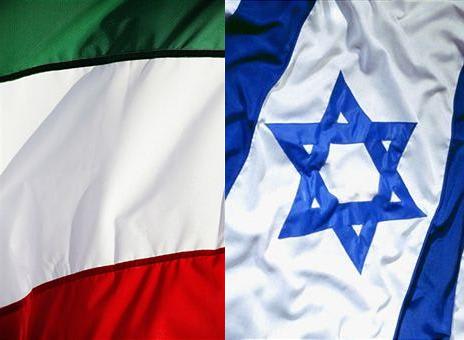Land of My Birth – Rabbi Bartenura, the famous commentator of the Mishna, decided to move to Jerusalem, even though this meant he would be leaving behind a settled and prosperous land in order to live in a remote and poor place. He left his rich family behind in Italy and began a long and arduous journey which took two and a half years. He sailed from Naples, in Italy, to the island of Sicily, and from there he continued through Rhodes to Egypt. At every stop along his way, the Jewish community quickly discovered his wisdom and begged him to remain with them as their leader. But in spite of the hardships of the journey, Rabbi Ovadia maintained his goal – to reach Jerusalem. He continued on his journey in a camel caravan which crossed the Sinai Desert and reached Azza. From there he rode on a donkey through Chevron and Beit Lechem. In the spring of 1488 he arrived at his yearned for destination. Here is how he describes his entry into the place:
“About three quarters of a mile away from Jerusalem… the blessed city was revealed to us, the site of our joy. And at that point we tore our clothing in sorrow, as we were required to do. And when, sometime later, we saw our holy Temple and its ruins, we tore our clothing a second time for the Temple. We came to the gates of Jerusalem, and we entered on the thirteenth of Nissan 5248, in the afternoon. On that very day we stood at the gates of Jerusalem.”
A large measure of faith and dedication was needed at the time to go to live in the holy city. The situation in the city in general and the status of the Jews in particular were very bad. Only seventy Jewish families remained, out of a total population of about 4,000. The Jews were less than 2% of the total number of inhabitants. Rabbi Ovadia continues:
“Jerusalem was desolate and destroyed, and it did not have any wall around it… The Jews once had many buildings, but they were all destroyed and desolate, piles of rubble… A small section of the Western Wall still exists. Its stones are huge and thick, I have never seen such great stones in any ancient building, neither in Rome nor in any other land.
“The Jews are the poorest of the people, with no livelihood… One who finds a single loaf of bread for an entire year is considered rich in this place. There are many widows, old and lonely, seven women for every man… And they all remain poor and wretched… There was a harsh famine in the land, and many of the Jews died of hunger… Many people ate grass from the fields, searching like the deer for fodder… Or they ate the remains of carob fruit…”
There was also a lack in the life of Torah. Most of the rabbis had fled Jerusalem because of the decrees of the Arabs, and this also led to a poor state of the synagogues. As a result, there was a severe shortage in the city of Torah scrolls, holy books, and other holy items.
Rabbi Bartenura was the right man in the right place. As soon as he arrived, he began to revitalize the destitute community. He dug graves, since nobody else was available to do this holy work. He became known as a Torah scholar and a beloved and admired leader, not only among the Jewish community but also among the government authorities. They respected him, and he tried through the authorities to lighten the heavy burden of taxes. While he was there, the Jewish community of Jerusalem grew and became stronger, partly because many of those who were expelled from Spain in 1492 came there. Rabbi Ovadia was honored both as a Torah scholar and as a political leader. The following was written about him:
“The man is very great, and everybody in the land listens to what he says. Without his permission no man will lift his hand, and many Gentiles come from far to hear his advice, which they always follow.”
Rabbi Ovadia was buried in a small cave at the foot of the Mount of Olives, near the spring of the Shiloach. This is very appropriate, because his wellsprings of Torah and wisdom continued to spread out among all the different communities of Yisrael.
Source: Avraham Ya’ari, “Letters of Eretz Yisrael,” and others. Reprinted with permission from Zomet Institute (www.zomet.org.il). Translated from the Hebrew by Moshe Goldberg. To subscribe to receive the complete version of Shabbat BeShabbato please write to dan@zomet.org.
The words of this author reflect his/her own opinions and do not necessarily represent the official position of the Orthodox Union.
